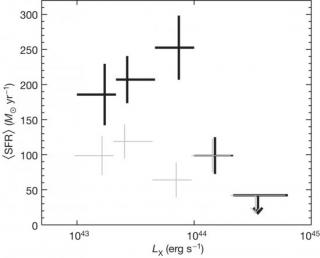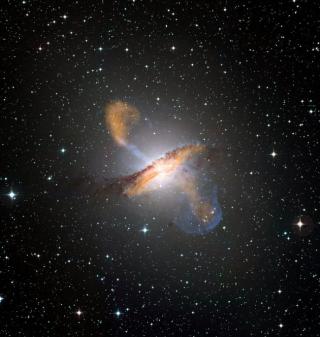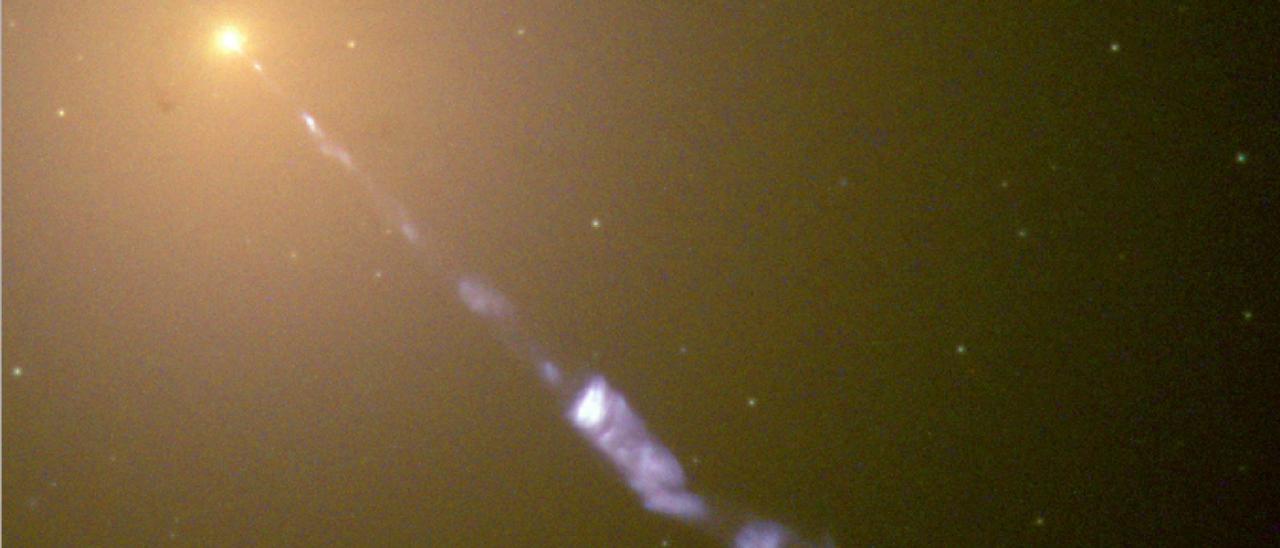A team of astronomers has discovered that galaxies with an Active Galactic Nucleus (AGN) –hosting continuously growing black holes that emit large amounts of energy and radiation– may undergo a period of rapid star birth before shutting down completely. The research, conducted by astronomers from the Instituto de Astrofísica de Canarias (IAC), the University of Southampton and the Institute of Space Sciences, ICE (IEEC-CSIC), was published in Monthly Notices of the Royal Astronomical Society: Letters.
The Universe is filled with trillions of galaxies, each one comprising billions of stars. Until now, most data show clear evidence that star formation in galaxies steadily declines with time, but the new research shows evidence for a sudden increase in star formation just before it shuts down.
Most, if not all, massive galaxies are believed to harbour supermassive black holes at their centres. When supermassive black holes are actively accreting gas, they can radiate as much energy as the galaxy in which they reside. The popular picture is that powerful winds and jets produced by the central AGN are able to expel or heat gas within the host galaxy, removing the material needed to make stars.
Equipped with a large sample of more than three thousand nearby active galaxies hosting AGN, the team used new data analysis techniques to measure how the star formation of the galaxies has changed over cosmic time. Challenging the expectations from the standard scenario, the team found that nearby galaxies hosting AGN are not simply gradually quenching their star forming rate. On the contrary, they are going through a “rejuvenation phase”, temporarily increasing the rate at which they form stars by accumulating fresh gas from their surroundings in recent epochs.
Star formation is typically extremely short-lived in cosmological terms - the period when galaxies form stars can be a hundredth of the age of the Universe, or shorter. The team concluded that current AGN activity may be contributing to, but not causing, the observed quenching of star birth. The rejuvenation of galaxies with active nuclei may thus be the “last breaths” in the lives of galaxies, before they completely stop forming new stars.
Ignacio Martín Navarro comments on their findings: "Galaxies may undergo several rejuvenation episodes until they finally become quiescent. The energy cumulatively released by supermassive black holes during these rejuvenation episodes is possibly related to the observed quenching, but there is still a lot of theoretical and observational work to do until we can have a satisfactory understanding of such a complex process."
Article: Ignacio Martín-Navarro, Francesco Shankar, Mar Mezcua: “Rejuvenation triggers nuclear activity in nearby galaxies”, Monthly Notices of the Royal Astronomical Society: Letters, slab112, October 2021. DOI: https://doi.org/10.1093/mnrasl/slab112
Contact at the IAC:
Ignacio Martín Navarro, ignacio.martin [at] iac.es (ignacio[dot]martin[at]iac[dot]es)









